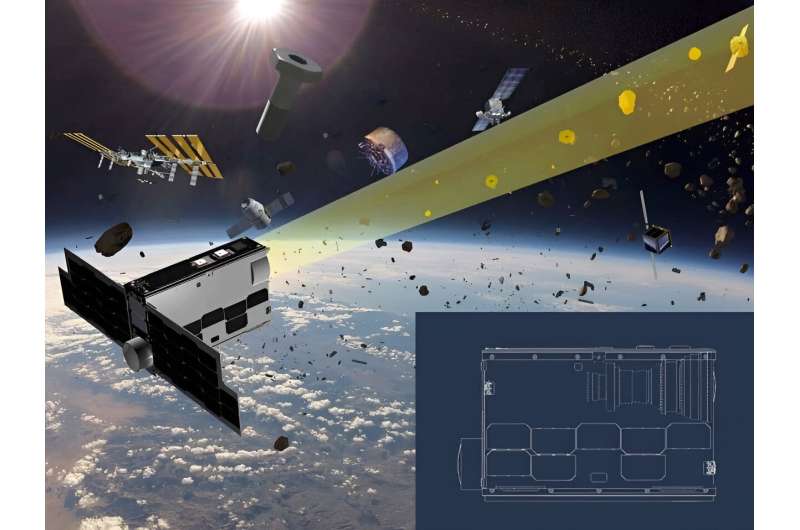Most ground-based observatories have long exposure times, allowing them to capture brighter but more stationary objects. NEAs, on the other hand, zip by the planet quickly and typically are so faint that the long exposure times on most observatories fail to see them at all. Since they move multiple pixels during each exposure, they don't appear bright enough to capture in this kind of survey.
That's where Sutter Ultra comes in. It's named after the Sutter Mill discovery that started the California gold rush of 1849 (and unfortunately, not after our own resident astrophysics expert—Paul Sutter). However, TransAstra's idea is significantly more technologically advanced than the prospector's pan used in that discovery.
Sutter Ultra would be three separate systems, each containing over one hundred 30 cm telescopes. They would fly in coordination in a type of orbit called a heliocentric Psuedo Geocentric Distant Retrograde (PRO) orbit. This would allow all three spacecraft to regularly focus on Earth and triangulate their readings in a way that wouldn't otherwise be possible.
Once the data has been captured, TransAstra has developed an algorithm to track individual asteroids on the paths they could travel throughout the image. They also released a neat explainer video that details the process they use and how it's superior to existing asteroid tracking techniques.
The company's calculations show that it is by far superior. Their write-up for the Sutter Ultra project estimates that the program could find 300x the total number of NEAs humanity has ever found in only its first year of operation. That would garner an astonishing 10 million asteroid finds every year, or 19 every minute of every day. And yet, it would still only be 1% of the total number of NEAs out there.
If that wasn't enough reason to be interested in the project, Sutter Ultra can also be used to track space debris, which is becoming an ever-increasing problem as most and most junk starts to fill the orbital space. Plenty of companies have developed business models around deorbiting space junk or zapping it with lasers, but if it lives up to the hype, Sutter Ultra would be by far the best way to track it.
For now, the company is tempering its ambitions with a three-step approach, which would make the $400 million potential price tag a bit more digestible for funding agencies. TransAstra has a ground system in place as part of its NIAC Phase II project.
They're currently focusing on defining a "Sutter Alpha" mission utilizing a CubeSat platform as a proof of concept. A Sutter Survey mission would then follow with three crafts in LEO with four telescopes each.
That means timing for the Sutter Ultra mission is still unclear, and the end goal of the original grant is in jeopardy. But even with a scaled down version that is more palatable to funding agencies, TransAstra is leading the charge on surveying systems for nearby asteroids. If they are lucky, they might just strike more gold than even the Californian 49ers could dream of.
Provided by Universe Today



